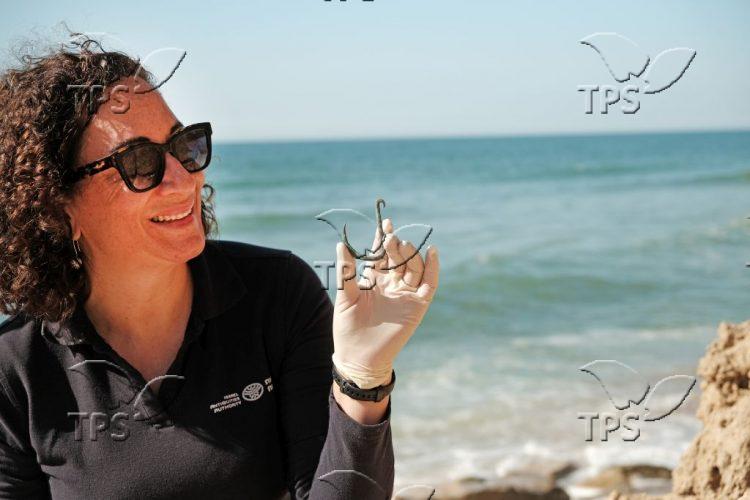6,000-Year-Old Copper Fishing Hook Discovered in Ashkelon Is Among World’s Oldest
Jerusalem, 29 March, 2023 (TPS) -- The Israeli Antiquities Authority presented on Wednesday a 6,000-year-old copper fishing hook, one of the oldest in the world.
The hook was discovered in 2018 during excavations prior to the construction of a new neighborhood in the coastal city Ashkelon.
Dr. Yael Abadi-Reiss, the Antiquities Authority’s co-director of the excavation, described the hook as 6.5 cm long and 4 cm wide, “the large dimensions making it suitable for hunting 2–3 meter-long sharks or large tuna fish.”
She explained, “More ancient fish hooks found previously were made of bone and were much smaller than this one. The use of copper began in the Chalcolithic period and it is fascinating to discover that this technological innovation was applied in antiquity for the production of fishhooks for fishermen along the Mediterranean coast.”
In the Chalcolithic period, there were large villages around Ashkelon, whose economy was based on branches of agriculture still common today, such as the pasturing of sheep, goat and cattle, the cultivation of wheat, barley and legumes and the tending of fruit orchards.
“We learn about the dietary habits of the people who lived here 6,000 years ago from the remains of animal bones found in ancient rubbish pits, from burnt wheat grains found in ovens, and from the hunting, cooking and food-processing tools retrieved, including flint sickles, and a variety of pottery vessels that served for the storage, cooking and the conservation of food by fermentation and salting,” Abadi-Reiss said.
“The rare fish hook tells the story of the village fishermen who sailed out to sea in their boats and cast the newly invented copper fishhook into the water, hoping to add coastal sharks to the menu.”
The find will be exhibited at the 48th Archaeological Congress in Jerusalem which begins on April 3.







